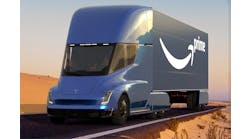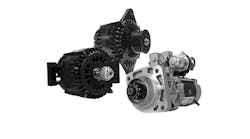The trucking industry hauls 51 million tons of freight, valued at nearly $52 billion, daily, according to the U.S. Department of Transportation (DOT). To keep that freight, as well as the drivers and the motoring public, safe, the trucking industry has taken strides to further develop and implement safety technologies on commercial vehicles.
An assessment of current safety technologies, and possible future ones, is imperative to ensure further adoption and acceptance. To prioritize this assessment, the Federal Motor Carrier Safety Administration (FMCSA) announced the launch of its Tech-Celerate Now program at the (in-person) TMC Spring Meeting this past February. Key objectives for the program include exploring the understanding and adoption of current advanced driver assistance system (ADAS) technologies as well as education and assessment of future ADAS technologies.
“The Tech-Celerate Now program promotes FMCSA goals of accelerating ADAS adoption, reducing crashes, saving lives, realizing substantial return on investment through initial safety values and long-term benefits,” said Ross Froat, American Trucking Associations’ (ATA) Director of Technology & Engineering Policy said, during a presentation at the ATA Technology & Maintenance Fall Meeting Opening Session, in September.
The program is a partnership with the FMCSA and numerous industry groups including TMC, the American Transportation Research Institute (ATRI), and the Owner Operator Independent Driver Association (OOIDA).
“We're looking to promote safety benefits and increase use (of vehicle safety technologies) for both large fleets as well as medium sized and small fleets, and owner operators,” said Jeff Loftus, Division Chief, Technology Division for the FMCSA, during the keynote address at the same event. “We'll do that by conducting research, outreach, developing outreach materials for maintenance personnel, driving professionals, as well as evaluating our impact.”
While industry research has provided some insight into the value of advanced safety technologies – through the ability to reduce the severity of crashes, if not prevent crashes altogether – more work needs to be done.
“A recent study by the Insurance Institute for Highway Safety suggest(ed) that large trucks with forward collision warning and automatic emergency braking systems could eliminate more than two out of five crashes in which a large truck rear ends another vehicle,” Loftus noted. “The study also suggested that the severity of these crashes could also be greatly reduced with these technologies.”
The Tech-Celerate Now program has promise to evaluate and quantify the value of these safety technologies further.
When it comes to increased adoption of a new technology, standard definitions and categories of products and/or processes help to ensure accurate measured results. Defining and categorizing these safety technologies allows the organization to set a benchmark on current specing and assessment for future adoption by fleets.
The Tech-Celerate Now program categorizes safety technologies into four categories: braking, steering, warning, and monitoring systems. Braking safety systems such as automatic emergency braking and adaptive cruise control as well as warning systems like lane departure, forward collision and blind spot detection have been available for spec on vehicles now. Newer technologies in the steering category, such as lane-keep assist and adaptive cruise control as well as monitoring systems like camera-based mirrors will be on late model vehicles in the very near future, noted Loftus.
Next steps for the program are to establish a benchmark on current safety technology adoption rates among fleets followed by an outreach campaign with promotion of technologies that provide a noticeable return on investment.
Those tools as well as expected proposed rulemakings on ADAS technology will continue by the end of the year, into 2021 and beyond, noted Froat.
“We're recognizing that no technology is a silver bullet, and not every technology is appropriate for every fleet out there or owner operator for that matter,” Loftus added.




